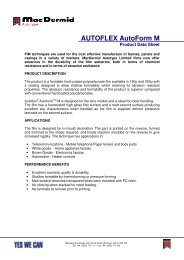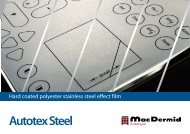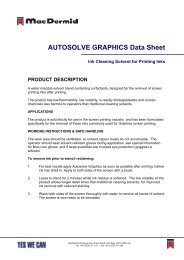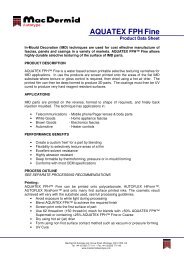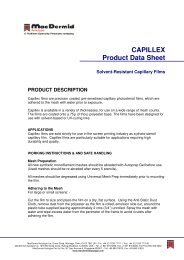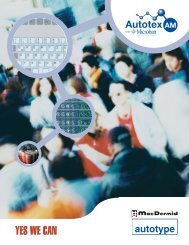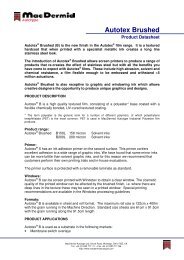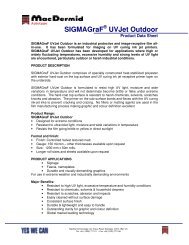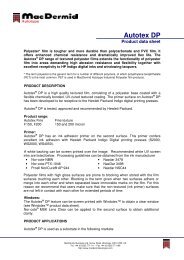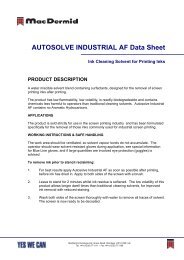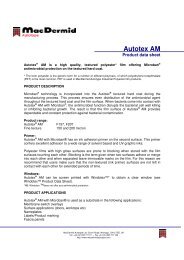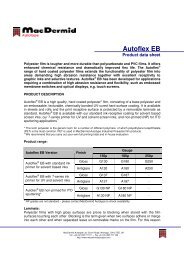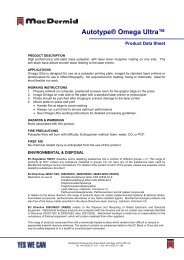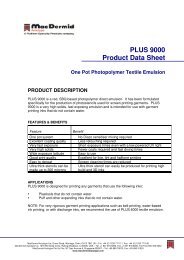Screen E-Book (.PDF) - MacDermid Autotype
Screen E-Book (.PDF) - MacDermid Autotype
Screen E-Book (.PDF) - MacDermid Autotype
- No tags were found...
Create successful ePaper yourself
Turn your PDF publications into a flip-book with our unique Google optimized e-Paper software.
DustPrint FaultsWe threw some dust onto the press duringprinting and, not surprisingly, got these“hickies” which would not be appreciatedby a customer!Orange peelThis is hard to image but easy to spot. Thereare many causes of orange peel, all comingdown to the fact that the ink is generallyunhappy when it’s drying. So printing anincompatible ink on top of another givesone type of orange peel (that’s what wedid to ensure we saw it). Having the wrongsolvent blend, or too much thinner is anotherway. The cause of this sort of orangepeel is interesting and is sometimes calledthe Marangoni effect. As the more-volatilesolvent evaporates it leaves behind a solventmix with a different surface tension.Dust can have a devastatingeffect on a printInk flows from high to low surface tensionso you start to get instabilities. These instabilitieswork in 3 dimensions and you startto get regular cells where solvent is risingin one point and sinking in another. Underthe right (or wrong!) conditions these cellscan form perfect hexagons, the classic markof the extreme Marangoni effect. The cureis either more gentle drying, more compatiblesolvents (less difference in volatility,less difference in surface tension) or amore effective surface active agent whichswamps differences in surface energy.Belt marksAgain this is a problem that’s easily visibleon the print but hard to show in a photograph.You see a broad regular pattern onthe print that coincides with the pattern ofthe belt that conveys your prints throughthe oven. We got the pattern to appearwhen the oven was too hot. Anna and Davidhave an explanation in their section onDrying problems.Registration problemsWe don’t need to show you the imagesbecause you know what they look like, butit was a useful exercise deliberately to dryor to humidify a print before printing thesame image on top of it. The dried printshrank by 2mm over a 400mm print (0.5%)and the humidified print expanded by1mm (0.25%). Such gross mis-registrationsare easy to spot, but doing this test was areminder that for precision printing, exactequilibration of the substrate betweenprints is of great importance. For paper,the effect of water is well-known. But theeffects on plastic substrates are less wellknown.See Steve’s “Registration” sectionfor a discussion of thermal and hygroscopiceffects in ultra-high-precision printingonto plastics.50



